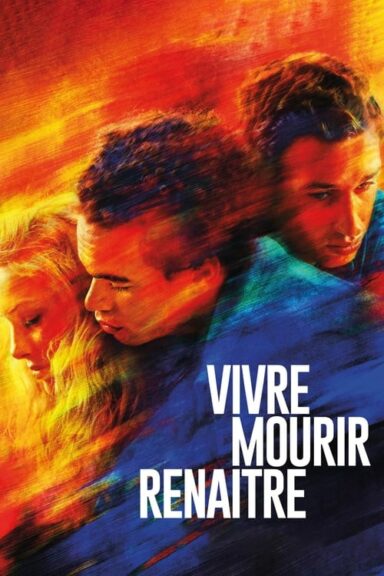
A film by Gaël Morel
With: Théo Christine, Lou Lampros, Victor Belmondo, Noah Deric, Amanda Lear, Elli Medeiros, Stéphane Rideau
Emma loves Sammy, who loves Cyril, who loves her back. What could have been a love story at the end of the last century is blown apart by the arrival of AIDS. Expecting the worst, each character’s destiny takes an unexpected turn.
Our rate 1: **
As with each of his films, Gael Morel speaks to us with emotion and sincerity, about intimate subjects. His cinematography recalls the best of Téchiné, the man who made him (Les roseaux sauvages, probably Téchiné’s best film, in which his sensitivity overflowed alongside another debutante, Elodie Bouchez). He takes the time to introduce his characters, to tell us who they are, what they think, what they aspire to, and above all the period of life they’re going through. Lesbian and gay films are often concerned with the question of desire, with love stories seen from the angle of attractiveness, but also with outside views, with the societal question that these “other desires” as they are sometimes called arouse in the most conservative. Gael Morel, on the other hand, is all about telling us slices of life, usually in a very gentle way, questioning first and foremost sentiment, love, and theorizing it, as Rohmer also did so well. Vivre, Mourir, Renaître is no exception to the rule. Well-constructed, adopting a rhythm appropriate to the story being told, we get to know each of the characters in turn. A discreet, polite photographer, particularly well played by Victor Belmondo, and a young couple who have just given birth. All are attracted to each other, and think about living. There’s nothing artificial about the story, which is based on the intimate experience of Gael Morel himself. The director’s sensibility can be breathed and seen on screen, and the dialogues breathe intelligence and an appetite for life and culture. In terms of form, Morel doesn’t take many risks – at most, he revisits the mythical scene from Carax’s Mauvais Sang (which would have pleased Gerwig, who herself revisited it in Frances Ha) – but he strives to maintain a fine tonal and narrative balance, the better to bring us closer to the trials we’ve been through. Less powerful than Happy Together, less piquant than Nuits Fauves, less dark than the stories of Jacques Naulot, it shares with them the ambition to convey emotions, feelings and trials with sincerity and sensitivity.
Our rate 2:*
Gaël Morel’s Vivre, mourir, renaître takes us back to an uncertain time, between the late 1980s and the 2000s, when the shadow of HIV still loomed over free sexual relations. There’s a distant homage to Cyril Collard’s Nuits Fauves or Robin Campillo’s 120 battements par minutes, but with less passion, with a timeless suspension of the painting of the relationship between the three protagonists. If Vivre, mourir, renaître seems to remain in a comfort zone, and to complete a cycle of films on AIDS, it’s perhaps – and this is the good news – because we’re dying a lot less of it. But what’s left to say on the subject?
Victor Belmondo and Théo Christine’s (known for his surly suburban roles from Suprême to Vermines, and who surprises us here) natural, off-the-cuff performance of the homosexual couple lends dynamism to a rather classic but effective staging. There’s something of the freedom and gentleness of the threesome formed by Sammy (excellent Théo Christine), Cyril (no less brilliant Victor Belmondo) and Emma (Lou Lampros, whose Scarlett Johansson-like looks and implausible courage give her an aura that makes her, in the end, the story’s strongest character, or at least the one who has the last word). Life scenes and nudes recall the uncomplicated relationships of the 1980s and 1990s, in the tradition of Bertrand Blier’s Les Valseuses.
The razor’s edge staging of this comedy of manners deftly weaves in and out of the pathetic, the tragic and the vaudeville, without minimizing the procrastination or wanderings of the characters faced with their destiny, which moves from pleasure to the implacable sanction of death. Gaël Morel’s great merit lies in tackling a number of sensitive issues, some of which have received little or no previous treatment: dealing with HIV in the family, bisexuality in couples, fidelity in threesomes, raising the children of parents with HIV. These subjects, which cascade from the problem of HIV in homosexual relationships, are quite organically articulated, and make the film plausible, interesting and moving without pathos, despite a few hollow moments.
The settings, linked to the AIDS years and perhaps to François Ozon’s Éte 85, create a quaint, timeless, vintage atmosphere, and are divided into a number of sub-sets that punctuate the narrative. Cyril’s profession as a photographer also provides an opportunity, without getting to the heart of the matter, to reflect on inspiration and the relationship between creation and death. Despite the Faustian theme of the cursed artist, sulphurous because he’s dying, the scenes of “desire” are striking, thanks to the talent of the two actors and the duet that works.
Although the film doesn’t reach the heights that would allow it to compete in the category of great films about couples or AIDS, with a few almost televisual moments bringing down the lyrical or tragic flights of fancy or the questioning that can be guessed at, Gaël Morel succeeds in dealing with a delicate triple subject by making it pleasant and sensitive, without excessive pathos, thanks to well-crafted direction.

